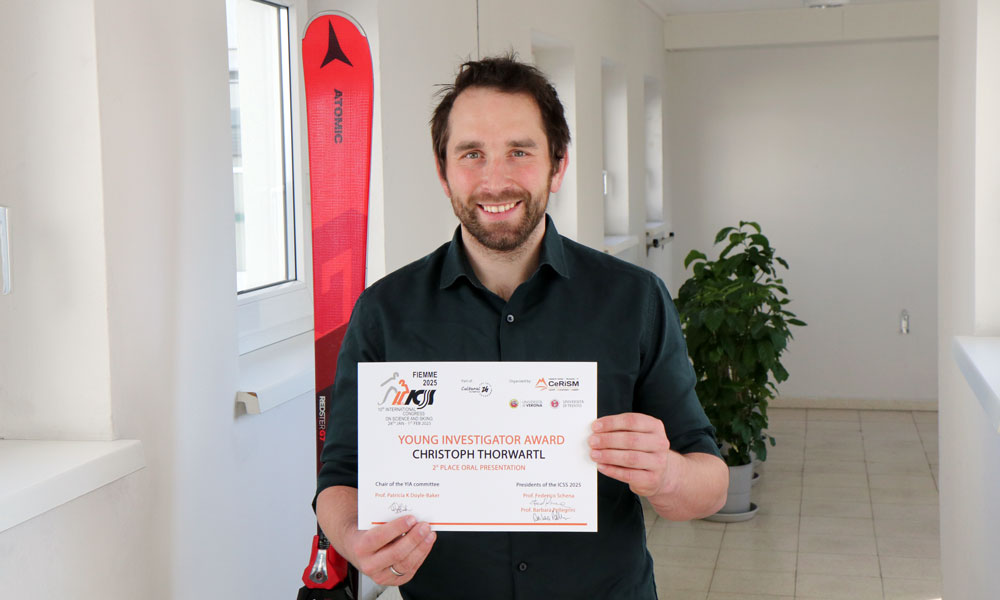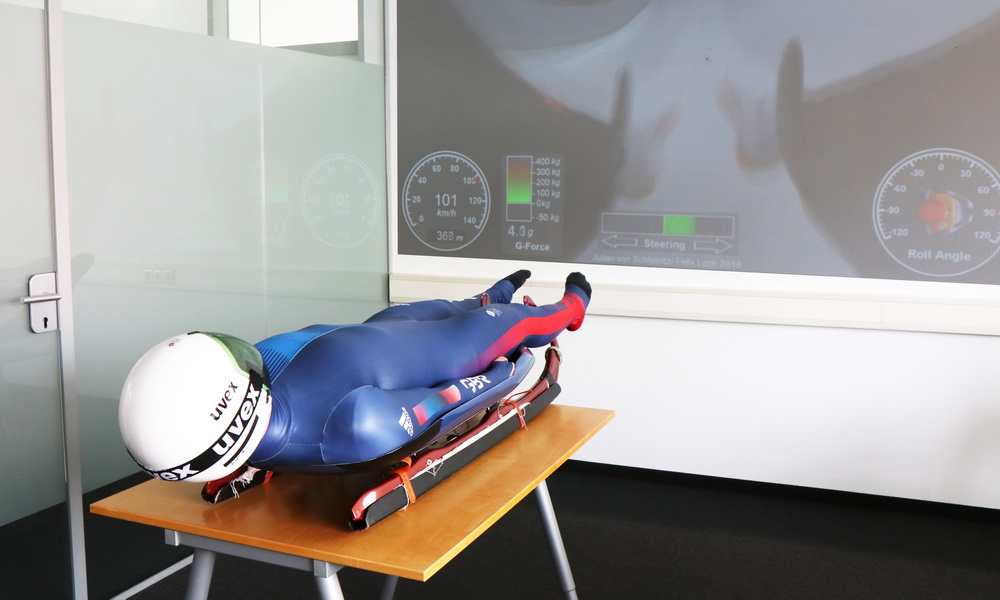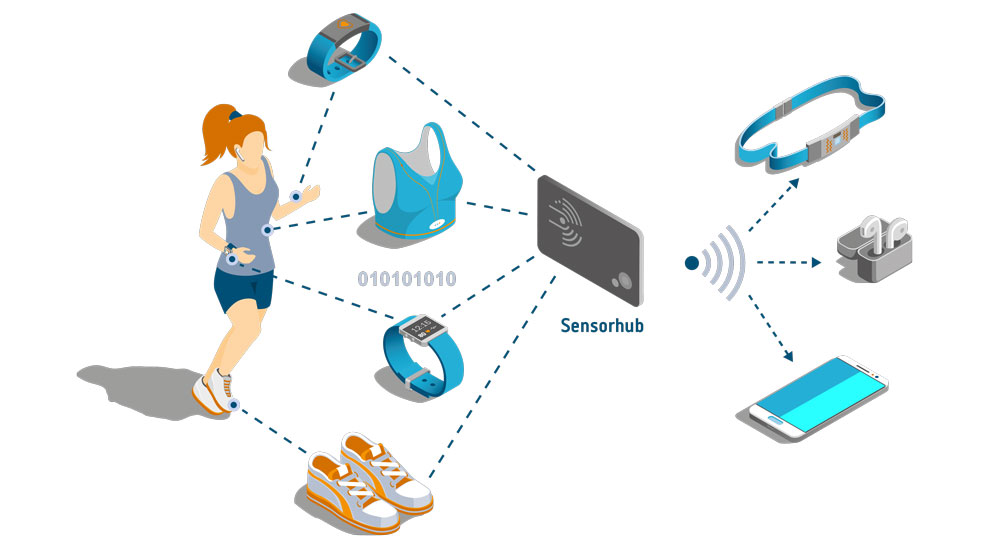
This is Digital Motion
Totally focused. Equipped with technology that measures and interprets motion and emotion data. Seamlessly getting meaningful real-time feedback. Interacting through novel interfaces. Enjoying new sports experiences, increased motivation, better performance, improved self-awareness and wellbeing through the link of motion and emotion. This is Digital Motion.
Mit dem Klick auf das Bild werden durch den mit uns gemeinsam Verantwortlichen Youtube (Google Ireland Limited) das Video abgespielt, auf Ihrem PC Skripte geladen sowie personenbezogene Daten erfasst.
The digitalization of sports enables new experiences, but should not interfere with the sports experience we already enjoy. The ability to measure and interpret multi-sensor data in order to provide real-time feedback by means of advanced human-computer interaction is a major challenge.
Typical issues are: sensor selection and configuration, multi-sensor fusion based on motion data, the quality of captured and interpreted values in the field, appropriate user interaction design patterns and feedback learning rules for seamless interaction in exertion.
In Digital Motion we develop methods and models, technologies and data sets to enable the measuring and interpretation of motion and psychophysiological data. To obtain these data we use multiple product-embedded sensors. We create novel motion quality analytics technologies combining not only motion but also emotion tracking and analysis while being in motion. Thereby, we obtain new insights into the quality of movement.
We aim at going beyond the traditional interaction paradigms and intensify the overall sports experience. Our demonstrator system combine motion data analytics technology and the seamless interaction in exertion with multi-sensor motion data. They address future smart sports equipment: Smart Equipment Customization and Digital Coaches for walking, running and alpine skiing. Bringing these systems from the lab to the real-world.
We are convinced that the combination of motion and emotion will lead into a next level of consumer experience in the area of Digital Sports.
To put this vision into practice, Digital Motion provides a strong consortium of industrial partners that teams up with research institutes and supports the education of young talents.#
Digital Motion in Numbers
In the last two years we have already taken many steps on our way to become one of Europe’s leading R&D projects in the field of Digital Sports. We collected data and evaluated algorithms for human motion and psychophysiological analytics, created novel user experience models, performed lab and field experiments and implemented our findings in first prototypes. Spoken in numbers, we published our findings in 30 papers, we reported about them in 3 scientific keynotes and 8 invited talks and applied for 7 patents. 11 PhDs are currently pursuing their research interests in the project, 5 master and 1 bachelor theses have already been successfully completed. 11 business and 4scientific organizations cooperate within Digital Motion. We are 14 women and 20 men, who combine their skills and pool their knowledge.
Cooperation between business and research
Digital Motion fosters excellent research cooperation between industry and science. Bringing interdisciplinary teams together is essential for addressing the research challenges and the transformation of findings from the lab to the field. To realize this, all partners are actively involved in Digital Motion. Using collaborative technologies and practices like rapid prototyping or participatory design and agile development supports us in interacting across teams. 6-weeks sprints with the whole consortium, half-year consortium meetings, bi-weekly demonstrator calls, PhD paper clubs and writing circles, a Digital Motion PhD lab, our Confluence Wiki platform and the Jira ticket systems are the main pillars behind this agile project organization. Our synergistic style of work enables exchange of expertise across projects and areas and initiates the transfer of ideas across application domains. Although we are so different, we share a common vision. We believe that the combination of motion and emotion will lead into a next level of consumer experience in the area of Digital Sports. Digital Motion creates added value by implementing the entire smart sports equipment value chain, which brings together a world class cooperation structure.
Mid-term review
Having reached the middle of the project period, we can now look back on the past two years where Digital Motion has positioned itself as a competence center with its special focus on linking biomechanics and psycho-physiological data. We have successfully established an internationalleading research group that is able to develop next generation motion data analytics technology and interaction concepts in sports, fitness and well-being equipment. There are two more exiting years ahead of us. From the competences, we have built up and the data we have collected, we will derive further knowledge about the connection of emotion and motion. We will understand which features are relevant for learning and coaching to support better sport experiences. We will further investigate the effects of activity on vitality. On our way to generate new innovative products, we will go further and shift our focus from data collection to algorithm development. We will continue to develop prototypes and perform further field and real-world tests. And we will share our findings.
We are convinced that digitalization of human motion will result in a deeper understanding of people’s activities and performance. We believe that not the “how long” or the “how often” is important but that the “how good”, “how effective” or “how do I feel” are people’s fundamental concerns and that – by use of digital technologies – we can create greater joy, motivation, and wellbeing. This is Digital Motion.






